Laminate flooring newsletter
Compare common types of industrial wood cores
Popular types of industrial wood cores Currently it is HDF – MDF – MFC – PB – OSB – CDF. Industrial wood is a product formed through the processing of natural wood. Different ways of treating wood create many wood cores with heterogeneous properties and functions.
How to preliminarily process natural wood to make industrial wood core
All types of industrial wood cores are formed through the following natural wood processing steps:
-
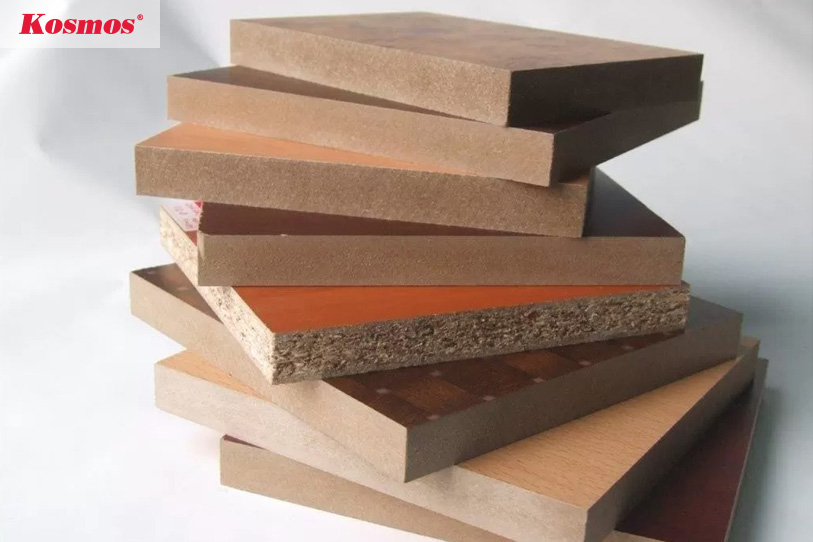
Popular types of wooden floor cores
- Step 1: Collect wood from licensed forests
- Step 2: Remove the bark with a planer.
- Step 3: Finely chop wood into granules (wood chips) with a chipper
- Step 4: Wood screening (Wood grain less than 2mm is discarded and wood grain larger than 50mm will be re-grinded.)
- Step 5: Remove dirt such as soil, sand from wood by washing with water
Types of industrial wood cores and how to make them
To be able to compare types of industrial wood core, we need to understand each type and how they are made. Many laminates are also classified by color because of the useful features that come from the characteristic ingredients.

HDF . industrial wood core
HDF wood core (High Density fiberboard) is industrial wood core with high density of fiberboard. The HDF core has the right quality standards for flooring. In addition, HDF flooring is also used for wall, ceiling and stair treads.
-

HDF . industrial wood core
The process of creating basic HDF laminate flooring includes the following steps:
| Steps to form HDF . laminate flooring | |
| Step 1 | Wood processing |
| Step 2 | We remove sap and water from clear wood by drying at high temperature (1000 - 2000 degrees Celsius). |
| Step 3 | Curing wood into fibers (or powders) |
| Step 4 | Mix special adhesives and additives according to the manufacturer's formula. |
| Step 5 | Compressing the mixture above under high pressure and temperature |
| Step 6 | Shape the wooden plank to the size and thickness required by the manufacturer. The average density of HDF is over 800 kg/m3 |
Laminate flooring Usually 8mm and 12mm thick. Thickness greatly affects the bearing capacity of the floor. In addition, HDF laminate flooring is also integrated with many more features such as antibacterial, water-resistant, termite-proof, fire-retardant, etc., according to the manufacturing formula of each brand.
-

HDF usually makes wooden floorboards
Wood core HDF are divided into 3 types including normal HDF, Green HDF and Black HDF (also known as CDF). Each type is mixed with different colors by the manufacturer to distinguish, specifically:
Conventional HDF core:
The wood core is kept the original color (yellow-brown color of the wood), no color mixing.
Green HDF (green core):
Wood core is mixed with Copper Oxide or glue with water resistance. The core is water resistant, antibacterial and has a bitter taste (restricts termites).
Black HDF (black core – CDF):
This type of industrial wood core is compressed under extremely high pressure, so it has extremely good water resistance. The article will analyze more closely about this high-class wood core right below.
MDF board
MDF wood core (Medium Density Fiberboard) is the wood core with average density of fiberboard. MDF core has neither the hardness nor water resistance suitable for flooring. Instead, MDF is often used to process furniture such as tables and chairs, doors, cabinets, etc.
| Manufacturing process of MDF industrial wood core | |
| Step 1 | Wood processing |
| Step 2 | Removes sap and water from wood and softens wood in a variety of ways under high temperature conditions such as:
|
| Step 3 | Processing wood into small and fine wood fibers by specialized machines. |
| Step 4 | Blending more specialized glues and additives into wood fibers |
| Step 5 | Spread and roll the wood fibers evenly, avoiding lumps |
| Step 6 | Press the wood fibers into wooden planks. We pre-press first and then proceed to hot pressing. |
| Step 7 | Shape a wooden plank by operations such as:
|
-
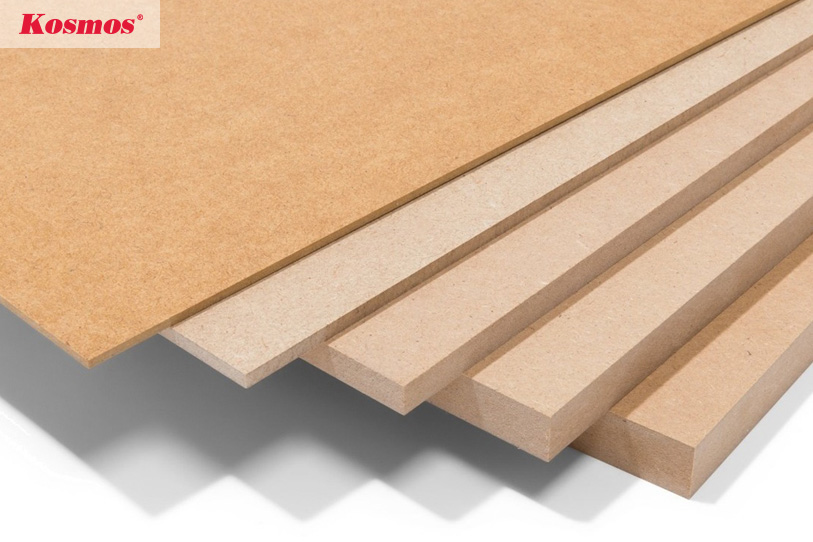
Industrial wood core has many different sizes
MDF boards have the lowest thickness of 3 cups and sometimes up to 25 cups depending on the needs of use. The average density of MDF is 600 – 800 kg/m3. The additives that are mixed into the wood pulp have a huge impact on the board. Manufacturers have mixed colors to distinguish MDF types as follows:
Regular MDF core:
The board has the natural color of wood pulp (brownish yellow) and the wood fibers are bonded with UF - urea formaldehyde glue.
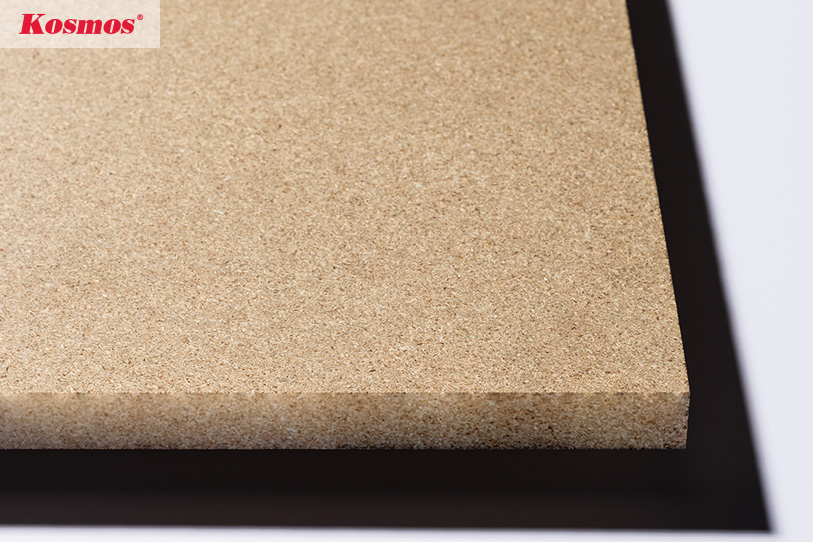
Green MDF core (water resistant MDF):
The board is water resistant thanks to high quality adhesives (MUF glue - Melamine Urea Formaldehyde, PF glue - Phenol Formaldehyde).
-

Water-resistant wood core MDF
Pink MDF core (fireproof MDF):
Planks help reduce damage when fire and explosion because the ignition time is very long, the fire is not large and produces very little smoke. The fire resistance of the board comes from flame retardant glue or mixing with other materials such as plaster, cement, etc.
-

MDF wood core is fireproof
MFC . particle board industrial wood core
Particle board is also known as Oka or Particle Board (PB). The way to make wood chipboard core is very simple. We do not need to grind natural wood into fibers (or powder) like HDF and MDF boards. Instead, we just need to take wood chips combined with UF glue (Urea Formaldehyde) and then bring it to hot pressing. We can consider using chipboard as a pallet.
-
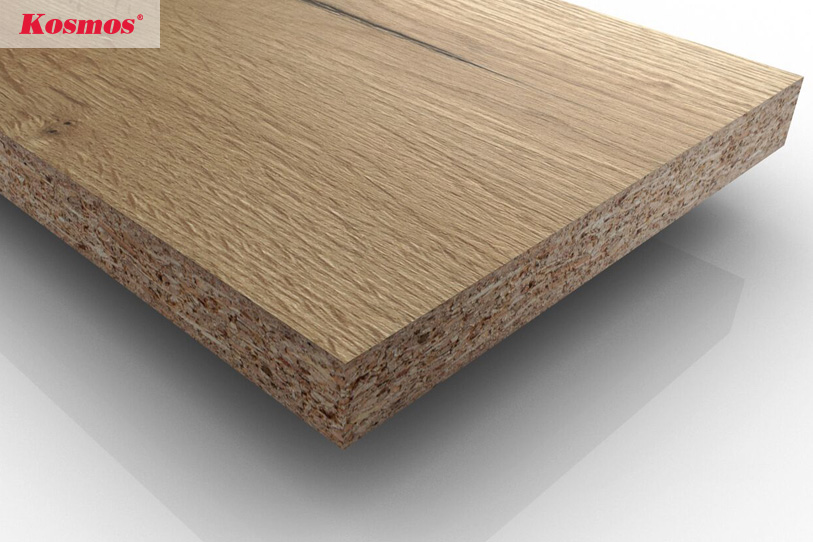
Wood chipboard core
Particle board is a product that utilizes excess wood during the process of processing wood such as tree branches and wood chips. Because of using leftover wood as well as making it from wood chips, the boards are cheap and the quality is not too high. To put into use, the surface of wood chipboard is often covered with a layer of material such as: come, melamine, acrylic,…
MFC industrial wood - Melamine-coated particle board
MDF (Melamine Face Chipboard) is a wood chipboard core covered with melamine. In addition, MFC wood boards are protected by using only pvc glued edges. The combination of melamine surface coating and pvc plastic edge makes MFC capable of being applied in items such as party decoration, fair decoration,....

OSB Wood Board – Oriented Particle Board
Oriented chipboard has the English name Oriented Strand Board (OSB). In Vietnam, we also know this type of industrial wood board under names such as: fat chipboard (fat chipboard) or chipboard. OSB wood board has superior quality than ordinary particle board (PB) and is used in many items such as floorboards, wall partitions, display shelves, etc.
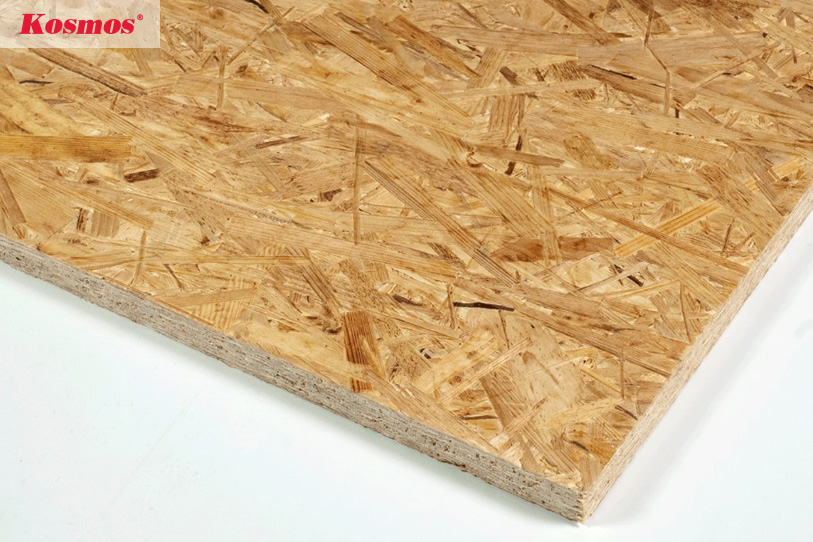
Oriented chipboard has a manufacturing process that is not very different from ordinary chipboard with components such as:
- OSB wood chips are large chips or shavings arranged in a certain direction.
- Glue for manufacturing OSB is type PF (Phenol Formaldehyde) or MUF (Melamine Urea Formaldehyde).
In addition, the ratio between the materials of the two types of chipboard has the following difference:
- OSB components include: 90 - 95% wood chips, 5% glue, 5% additives (if any)
- PB components include: 80% wood chips, 10% glue, 9% water, 1% additives
-
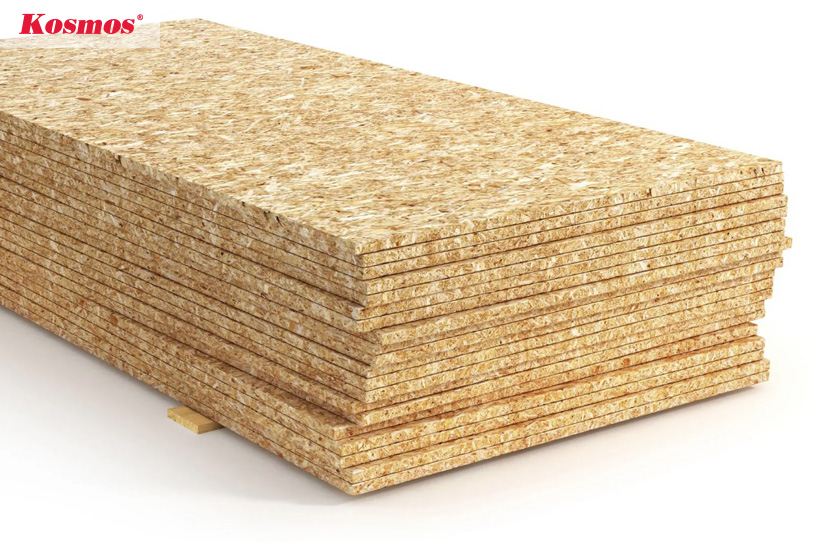
OSB chipboard with high quality
CDF (Black HDF) wood core
CDF (Compact Density Fiber Board) is known as a premium version of HDF (Black HDF). CDF wood core is black with light weight, thin board thickness but extremely high hardness. In addition, CDF boards are also commonly used in wet locations due to their superior water resistance.
-

Black CDF wood core
Black is the easiest color to match, so CDF boards are suitable for many interior design styles. Black color also helps to preserve the beauty of the board when cutting and shaping. Moreover, CDF board has a smooth flat surface so there is no need to equip surface coating. We only need to wipe through a layer of oil on the surface to use the board as a modern decoration.
-

High-grade CDF
The price of CDF wood on the market is extremely expensive, so it has not been widely used. We often encounter CDF in high-class apartments at locations that need sophisticated and detailed cutting and shaping. In addition, CDF boards are often used to make walls of places such as coffee tables, sinks, kitchens, etc.
Application of industrial wood cores
| Summary of applications of industrial wood reinforcement | ||
| Industrial wood core | Form | Application |
| PB | Particle board | Making shelves (Palette) |
| MFC | Melamine-coated chipboard | Make short-term supplies. |
| OSB | Oriented particle board (high quality chipboard) |
|
| MDF | Medium density fiberboard | Make long-term items. |
| HDF | High density fiberboard |
|
| CDF (Black Core HDF) | Fiberboard has a higher density than HDF board and has superior water resistance. |
|
Information about industrial wood cores The article above has been updated. We hope the article provides enough necessary information for you to easily make a choice. The current reputable laminate flooring unit is Kosmos Vietnam with many quality products for customers. You can contact us at hotline: (+84) 903 093 221
Kim Hoa is an expert in interior and exterior decorative materials at Kosmos Vietnam. She has professional knowledge of interior design and loves finding creative ways to optimize space with simple construction decoration materials such as wood, stone, bamboo, brick and plastic.
Kim Hoa Regularly participate in seminars and exhibitions on interior decoration materials to update the latest trends, as well as to learn more about interior decoration materials. Meet interior and exterior designers, architects, and material experts to continuously learn. She also actively shares her knowledge and experience on social media channels such as Facebook, YouTube, Tiktok... with more than 100 thousand followers.
Mission of Kim Hoa not merely providing information, but also ensuring that All information posted is quality, has in-depth investment and is most useful to viewers.
- Review of MDF industrial wood wall skirting: Is it good? Price list, classification
- Is Kingdoor door review good? Classification and quotation
- AZ HDF wood: origin, characteristics, properties
- What is Green Core Wood Flooring? Green HDF . characteristics and safety
- Price list of perforated aluminum ceilings - advantages and disadvantages?
Related articles of interest:
- Galawood plastic wood newsletter
- Kosmos plastic wood newsletter
- Newsletter Kosmos
- Korean Wave Newsletter
- Newsletter fluted panel Kosmos
- Korean molding news
- Stone PVC Newsletter
- Laminate flooring newsletter
- Egger laminate flooring newsletter
- Galamax laminate flooring newsletter
- Kosmos laminate flooring newsletter
- Povar laminate flooring newsletter
- Robina Flooring Newsletter
- Newsletter Thaixin laminate flooring
- Plastic floor newsletter
- Newsletter plastic wall panels
- Newsletter of bamboo charcoal panels
- Bulkhead newsletter
- agents
- Accessories consultation
- Wiki - Interior and exterior trends






